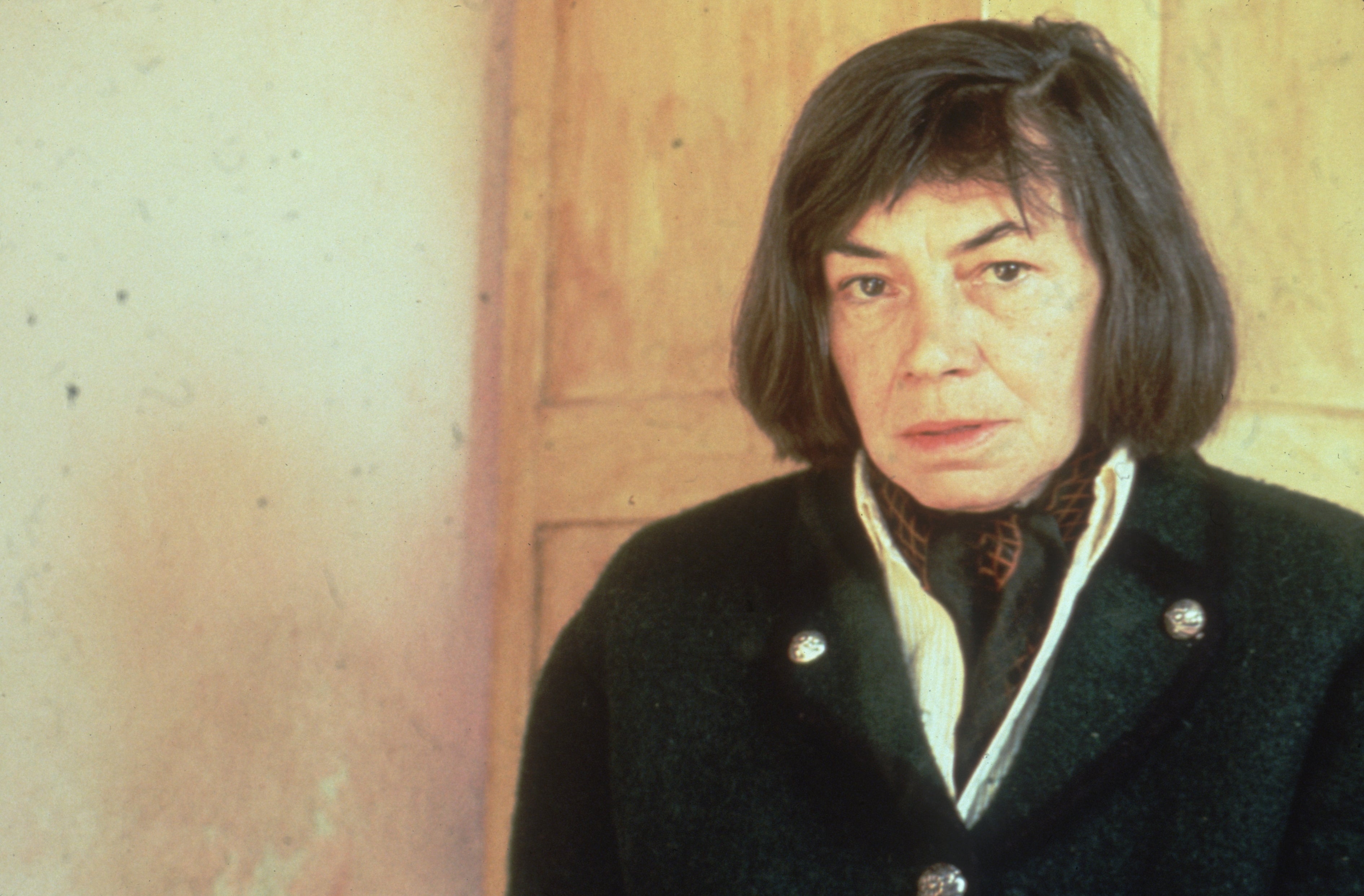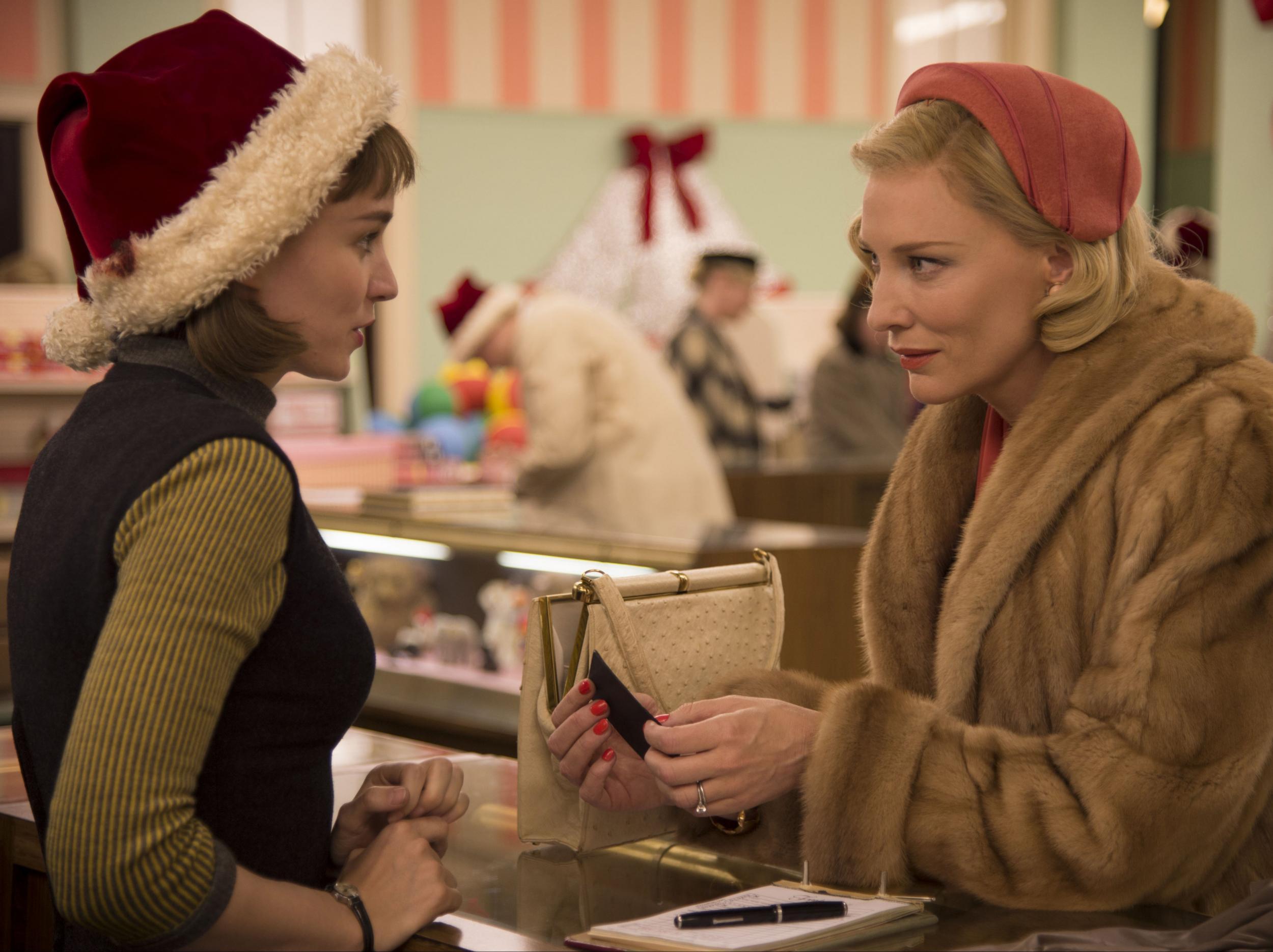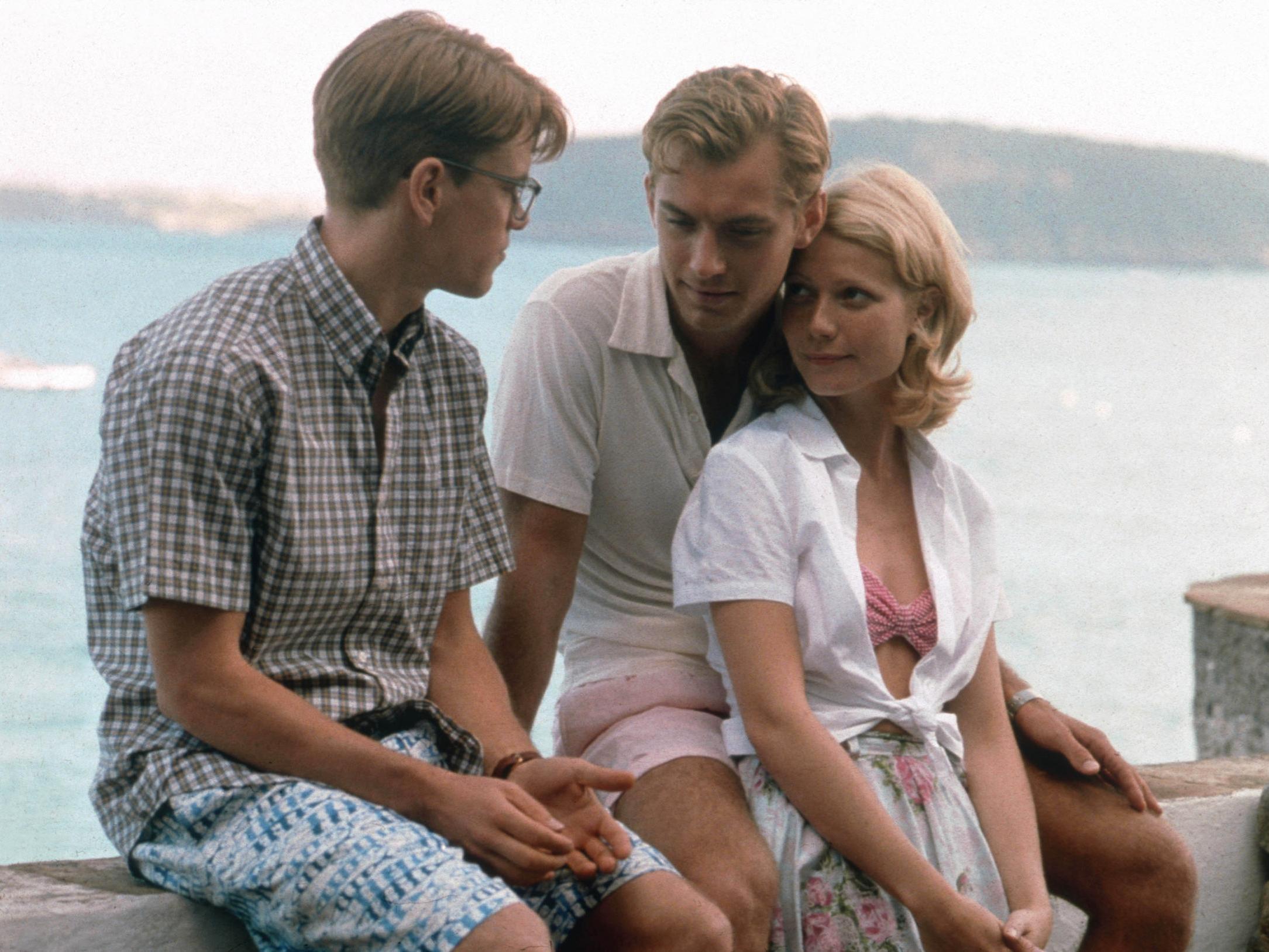‘Murder is a kind of making love’: The strange life of Patricia Highsmith, the author behind The Talented Mr Ripley
Patricia Highsmith set the blueprint for the modern psychological thriller. As Andrew Scott takes on the role of her most famous antihero Tom Ripley in a new Netflix series, Katie Rosseinsky looks back at a literary legend with a dark side


Your support helps us to tell the story
From reproductive rights to climate change to Big Tech, The Independent is on the ground when the story is developing. Whether it's investigating the financials of Elon Musk's pro-Trump PAC or producing our latest documentary, 'The A Word', which shines a light on the American women fighting for reproductive rights, we know how important it is to parse out the facts from the messaging.
At such a critical moment in US history, we need reporters on the ground. Your donation allows us to keep sending journalists to speak to both sides of the story.
The Independent is trusted by Americans across the entire political spectrum. And unlike many other quality news outlets, we choose not to lock Americans out of our reporting and analysis with paywalls. We believe quality journalism should be available to everyone, paid for by those who can afford it.
Your support makes all the difference.No one wrote antiheroes like Patricia Highsmith. Take Tom Ripley, the “suave, agreeable, and utterly amoral” conman protagonist of her 1955 thriller The Talented Mr Ripley, who lies, cheats and murders his way around Europe – and somehow makes us root for him while doing so. Almost 70 years since he first appeared on the page, he remains utterly compelling: no wonder Netflix’s TV adaptation, Ripley, which will star Andrew Scott, is one of 2024’s most anticipated releases.
Highsmith’s novels are filled with characters who, like Ripley, would look entirely normal if you passed them in the street, yet are consumed by dark impulses, horrible secrets, and the fear of being found out. Reading them can feel like the literary equivalent of an anxiety attack: not for nothing did Graham Greene, an early admirer, call her “the poet of apprehension”.
And just as her characters could be fascinatingly appalling, Highsmith herself had a (very) dark side – one that went far beyond her fixation with the murky depths of humanity, her alcoholism, and her strange habits, such as carrying snails in her handbag. So who was this strange figure, obsessed with delving into the minds of murderers? And how did she come to set the blueprint for the modern psychological crime novel?
Born in 1921 in Fort Worth, Texas, Highsmith had a fraught childhood. Her parents divorced just 10 days before she was born; her mother, Mary, would later tell Patricia that she had drunk turpentine during her pregnancy in the hope that it would cause her to lose her baby. This streak of performative cruelty would characterise the pair’s relationship.
Mary married Stanley Highsmith in 1924, and the young Patricia took his surname; they moved to New York City a few years later, but the couple argued viciously and broke up repeatedly.
Patricia would look back on her early life as “a little hell”. When she was 12, Mary abandoned her in Texas for a whole year without warning or explanation, leaving the young girl in her grandmother’s care. The incident was a source of lifelong resentment for Patricia, who would eventually trace Freudian echoes of this abandonment in her romantic life. “I repeat the pattern, of course, of my mother’s semi-rejection of me,” she wrote to a friend. “I never got over it. Thus I seek out women who will hurt me in a similar manner.”
As a student at Barnard College in New York, she started writing short stories and trying to sell them to magazines. She seemed to strike upon her ideal subject matter early on. “[I] do suspense well,” she wrote in 1942. “The morbid, the cruel, the abnormal fascinates me.” Highsmith was a prolific diarist, leaving behind around 8,000 pages of handwritten notes detailing her daily life, recorded in a chaotic array of languages (including ones she didn’t speak very well – pity her long-suffering archivists).
Her journals from this period are a rollercoaster. One moment she is extolling her own genius (“I have an arrogance that I shall never lose – that I really don’t want to entirely,” she writes, with self-awareness); the next she is haranguing herself for not working hard enough. She constantly grapples with hangovers after too many martinis, and details a revolving lineup of love interests, mostly female (she has male admirers, too, but, she writes, “kissing them is like kissing the side of a baked flounder”). These infatuations, most of them short-lived, are interspersed with bouts of self-loathing, apparently driven by an internalised homophobia.
She would deliberately sabotage relationships (her own and those of others), cutting off her partners when they became too close. Her friend Phyllis Nagy, the screenwriter who would eventually win an Oscar for adapting Highsmith’s Carol for film, described her as “a lesbian who did not very much enjoy being around other women”.
After a brief stint working as a publicist for a deodorant brand, and a longer one as a comic-book writer (a colleague once set her up on a blind date with Marvel’s Stan Lee), she joined the Yaddo writers’ retreat in upstate New York on the recommendation of Truman Capote. Here, she worked on Strangers on a Train, which was eventually published in 1950 to critical and commercial success; the following year, Alfred Hitchcock turned it into a Hollywood movie.
It set the template for the classic Highsmith novel: a pair of characters, irresistibly drawn together by obsession and guilt, and a plot filled with stomach-lurching suspense. But for her next work, the author would briefly take a very different path: writing a romance, with shades of autobiography.

In the late Forties, Highsmith started seeing a therapist. Many of the women in her social circle – including the ones she’d slept with – were starting to settle down and get married. It was time, she thought, for her to do the same; her friend Marc Brandel, an English novelist, kept proposing, and therapy seemed to offer the chance “to get myself into a condition to be married”, she wrote.
Her therapist suggested that she join a group session attended by married women who were “latent homosexuals” (Highsmith’s response? “Perhaps I shall amuse myself by seducing a couple of them”). To afford this, the writer started taking shifts at Bloomingdale’s. One December day, a glamorous blonde woman swept into the toy department wearing a fur coat; she bought a doll for her daughter from Highsmith, who went home and sketched out the plot for The Price of Salt, now better known as Carol thanks to Todd Haynes’s gorgeous film adaptation starring Cate Blanchett and Rooney Mara. She stopped visiting the therapist soon after, too.
In the novel, this brief encounter on the shop floor is the start of a love story between Therese, the younger aspiring designer, and the older, married Carol. Highsmith published it under a pseudonym, and only revealed herself as its author a few years before her death. It is the only one of her novels not to feature some form of brutal violence (although that’s not to say it’s a breezy read – it’s still shot through with clear-eyed realism).
“The appeal of The Price of Salt was that it had a happy ending for its two main characters, or at least they were going to try to have a future together,” Highsmith wrote in its foreword in 1990. Before her book, she said, “homosexuals male and female in American novels had had to pay for their deviation”.
There is, inevitably, another, darker story behind Carol. After meeting that glamorous woman on the shop floor, Highsmith memorised her address – then more than a year later travelled hours to her street in New Jersey to watch her. “Yesterday I felt quite close to murder, too, as I went to see the house of the woman who almost made me love her when I saw her,” she wrote in her diary. “Murder is a kind of making love, a kind of possessing.”
In this sinister obsession with a beautiful, wealthy stranger, there are certainly shades of Tom Ripley, who would become the literary creation with whom she most identified. “Patricia Highsmith was Tom Ripley without the charm,” the writer Edmund White put it rather bluntly in The New York Times.
I often had the feeling that Ripley was writing it and I was merely typing it
Ripley is a clever, vicious social climber with a talent for impersonation, who is able to finagle his way into the confidences of the rich. In his first escapade, he is dispatched to Italy to persuade the wealthy Dickie Greenleaf to return to the States, having been paid to do so by Dickie’s shipping magnate father, who believes that Ripley is a former Yale classmate of his son’s. Obsession and murder soon follow.
In the sun-soaked 1999 film adaptation, Matt Damon brought the character to life, opposite Jude Law as Dickie and Gwyneth Paltrow as his girlfriend Marge; the new TV version, meanwhile, has Johnny Flynn and Dakota Fanning in those two supporting roles.
Highsmith was so consumed by her protagonist that she started to sign off letters with the name “Tom”; while working on the novel, she said, she “often had the feeling that Ripley was writing it and I was merely typing it”. Her goal with The Talented Mr Ripley was, she admitted, not just to “show the unequivocal triumph of evil over good, and rejoic[e] in it”, but to “make my readers rejoice in it, too”. She certainly succeeded – and ended up returning to her character in four further novels, which she described as her “Ripliad”.

Beyond the “Ripliad”, she continued to delve into the darkest of subjects: death and sexual obsession remained her staples. In 1957’s Deep Water, a humiliated husband becomes obsessed by the unsolved murder of one of his unfaithful wife’s boyfriends – and tries to take credit for the death, to drive away new suitors. Highsmith being Highsmith, it’s not long before real life starts to imitate his lie.
In A Suspension of Murder, published a few years later, an author’s murderous fiction eventually seeps into real life, while 1962’s The Cry of the Owl is the paranoia-drenched tale of a stalker, inspired by Highsmith’s own foray into stalking. By the Seventies, the critical consensus goes, her work had lost some of its early sharpness, but there are still gems from this time in her back catalogue: take Edith’s Diary from 1977, the deeply unsettling story of a housewife losing her grip on reality.
As she got older, and swapped America for Europe, Highsmith doubled down on her drinking and her misanthropic tendencies (“I choose to live alone because my imagination functions better when I don’t have to speak with people,” she admitted). Her eccentricities became yet more pronounced.
She became obsessed with snails, a fascination she bequeathed to Vic Van Allen, the protagonist of Deep Water, who retreats to his garage to watch his pet snails engage in mating rituals while his wife “entertains” her latest boyfriend. She would bring hundreds of them to parties, carrying them on a lettuce leaf in her handbag, and once snuck them through customs while travelling from England to France by hiding them in her bra. Friends recall her eating chunks of raw meat, deliberately setting her hair alight at the dinner table, and throwing a dead rat at a guest through an open window – the sort of behaviour that might have seemed far-fetched if she’d put it on the page.

Her prejudices became yet more entrenched, too. These are not the sort of attitudes that can be shrugged off as relics from a different time – they were vile then, too. Highsmith proudly called herself a “Jew hater” and referred to the Holocaust as “the semicaust”, claiming that its genocide had not gone far enough. Her attitudes to other races were just as foul. “She was an equal opportunity offender,” one friend said. “You name the group, she hated them.”
By the time of her death in 1995, Highsmith was a reclusive loner; the last person to see her alive was her accountant (she had always been obsessed with taxes). Three decades on, her literary status has never been stronger: her books are rightly acknowledged as the pinnacle of suspense writing, impeccably plotted while plumbing the murky depths of human psychology. She’s been hailed by the likes of Gillian Flynn and The Girl on the Train author Paula Hawkins as an inspiration (plus the slew of psychological thrillers we see on TV certainly owe Highsmith a huge creative debt). Richard Osman, the reigning king of a very different kind of crime novel, has also spoken at length about his love of her work.
At the same time, thanks to the publication of her diaries, and various biographies, her foibles and flaws have never been more glaring. Much like her best characters, she remains an impossible, horrible conundrum, enthralling and repellent at the same time.
Join our commenting forum
Join thought-provoking conversations, follow other Independent readers and see their replies
Comments